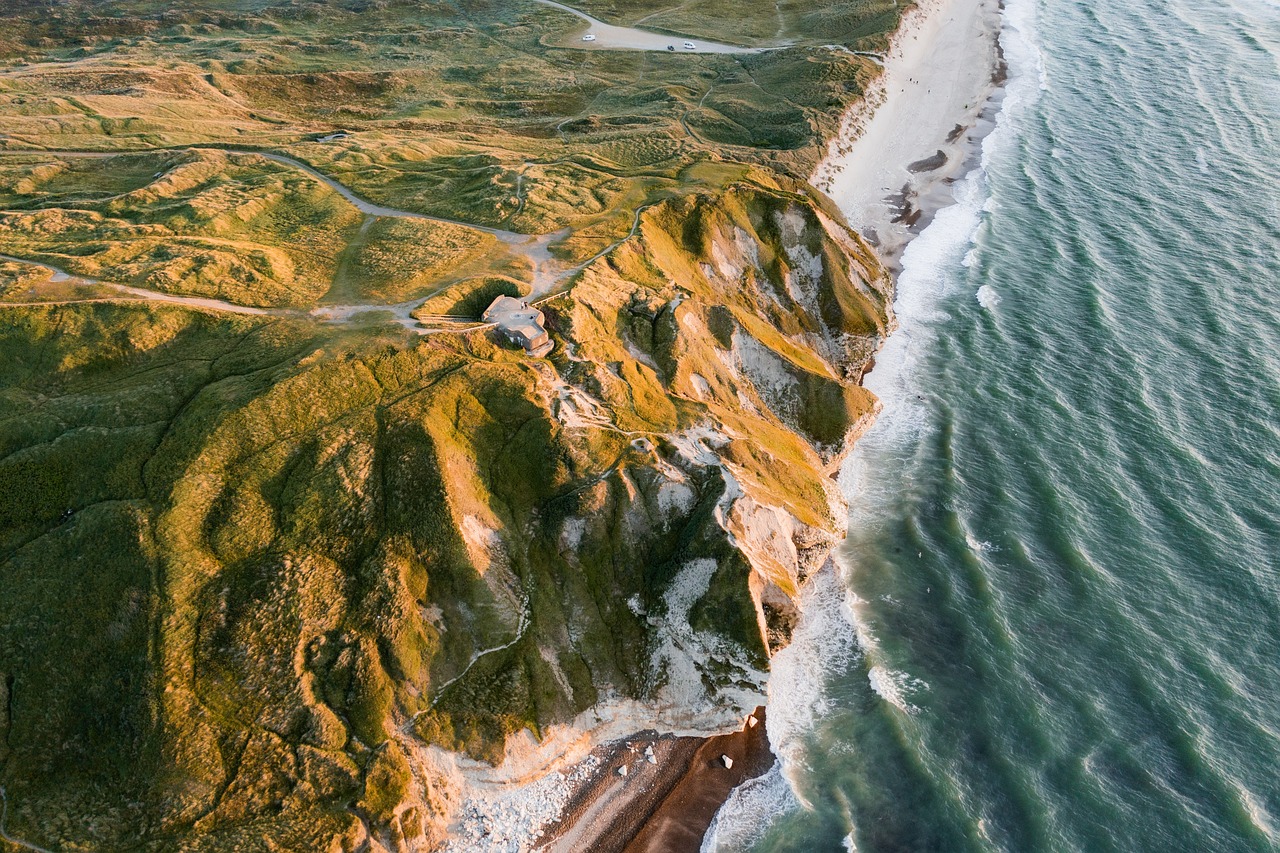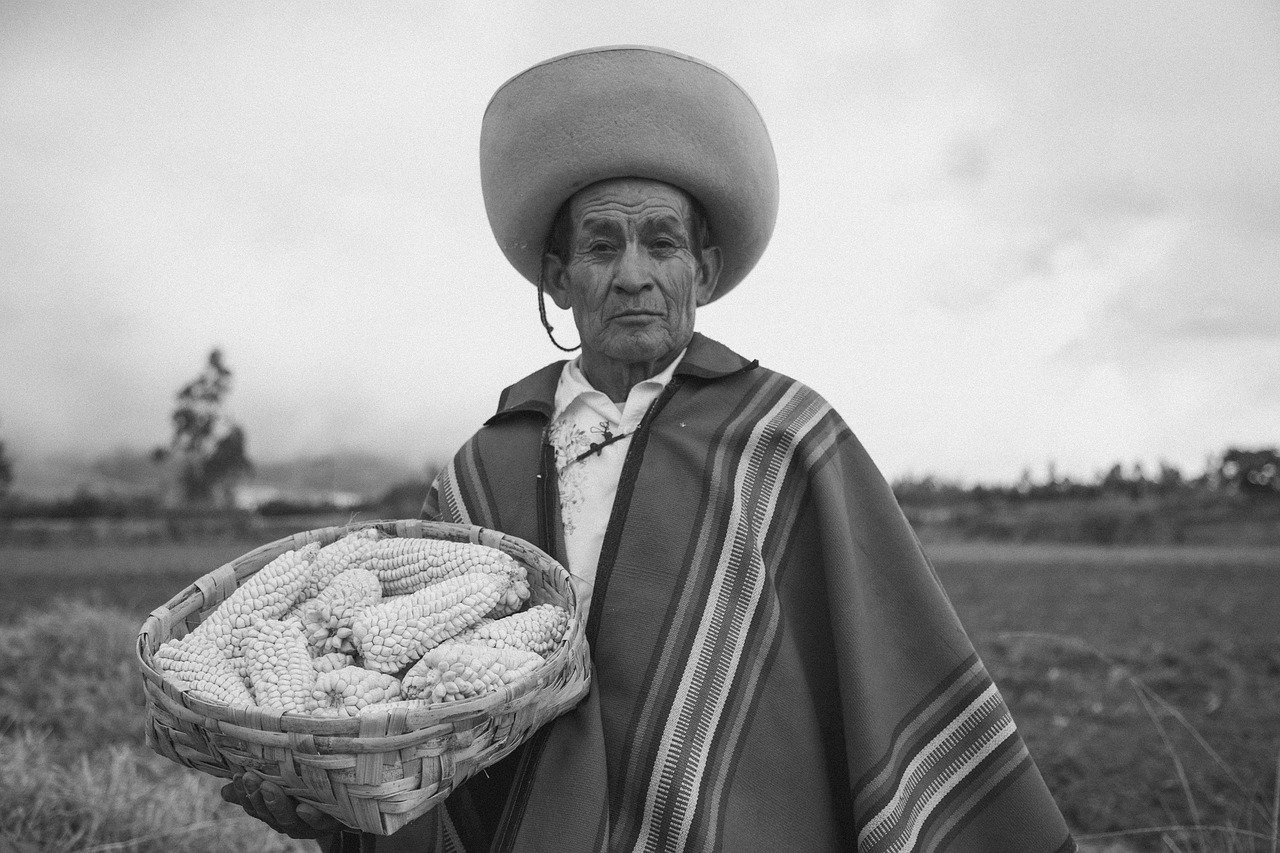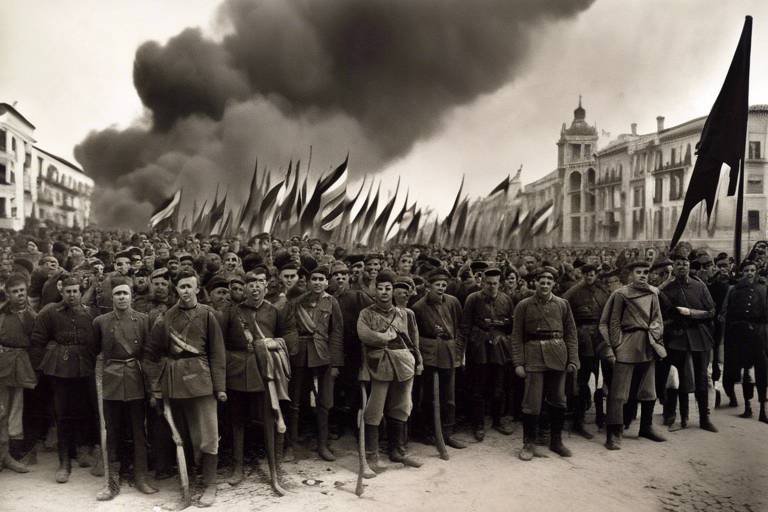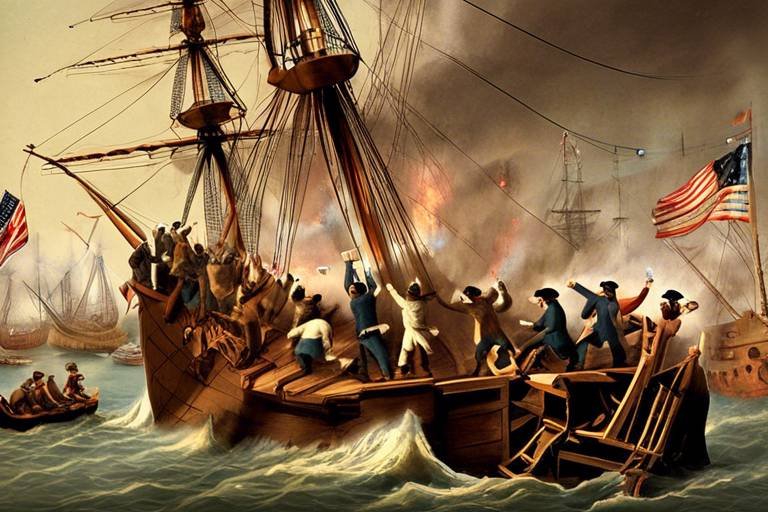The Impact of the Age of Exploration on Indigenous Peoples
Exploring the consequences of European exploration on native populations reveals a complex tapestry of impacts that have reverberated through history. The encounter with European explorers brought about profound cultural disruptions within indigenous societies, leading to the erosion of traditional practices, beliefs, and social structures. This upheaval challenged the very fabric of native communities, reshaping their identities and ways of life.
One of the most devastating outcomes of the age of exploration was the spread of diseases introduced by European colonizers. Diseases such as smallpox and measles, to which indigenous populations had no immunity, swept through native communities like wildfire, resulting in catastrophic demographic collapse. The toll taken by these illnesses was immense, forever altering the population dynamics of indigenous peoples.
The practice of forced labor imposed on indigenous populations by European powers further compounded the suffering experienced by native communities. Enslavement, indentured servitude, and the encomienda system all served to exploit native labor for economic gain, perpetuating cycles of oppression and subjugation. The forced extraction of labor from indigenous peoples left lasting scars on their societies.
Another significant impact of European exploration was the confiscation of indigenous lands by colonial powers. Through a combination of treaties, conquest, and legal mechanisms, European settlers systematically appropriated native territories, displacing indigenous communities from their ancestral lands. This dispossession severed indigenous peoples from their connection to the land, disrupting their cultural and spiritual ties.
Despite facing overwhelming odds, indigenous populations mounted resistance and revolts against European colonization. Armed uprisings, rebellions, and diplomatic negotiations were all strategies employed by native peoples to protect their sovereignty and rights. These acts of resistance were courageous stands against the forces seeking to subjugate and marginalize indigenous communities.
Amidst the tumult of the age of exploration, there were also cultural exchanges between indigenous peoples and European explorers. These interactions facilitated the exchange of goods, ideas, technologies, and languages, leading to a blending of cultures and knowledge. The cultural landscape of both indigenous communities and European settlers was forever altered by these exchanges.
However, the legacy of the age of exploration has left a deep imprint of trauma on indigenous communities that continues to be felt to this day. The violence, exploitation, and displacement experienced by native populations have resulted in intergenerational effects that persist through generations, shaping the social and psychological well-being of indigenous peoples.
As we look to the present, indigenous communities continue to grapple with contemporary challenges stemming from the legacy of the age of exploration. Issues of land rights, cultural preservation, economic development, and political autonomy remain pressing concerns for indigenous peoples as they navigate the ongoing impacts of historical injustices.

Cultural Disruptions
Exploring the consequences of European exploration on native populations, including cultural disruptions, disease spread, forced labor, and land confiscation, shaping the course of history for indigenous communities around the world.
The encounter with European explorers brought about a wave of cultural disruptions among indigenous peoples. Traditional practices, beliefs, and social structures that had been integral to native societies for generations faced erosion and upheaval. Imagine a whirlwind sweeping through a peaceful village, leaving behind fragments of traditions and customs in its wake. The introduction of new ideologies clashed with age-old rituals, leading to a clash of cultures that reverberated through indigenous communities.
As European influence spread, indigenous ways of life were fundamentally altered. The fabric of society was torn asunder, with the threads of tradition unraveling before the bewildered eyes of native populations. The once harmonious tapestry of cultural practices was now frayed, with foreign concepts weaving themselves into the narrative of indigenous identity. It was a seismic shift that left many grappling with a sense of loss and disorientation, as the familiar landmarks of their heritage were obscured by the shadows of colonial intrusion.
In this turbulent sea of change, indigenous peoples found themselves adrift, caught between the tides of tradition and the undertow of foreign imposition. The clash of civilizations brought about a reckoning of values, as age-old customs collided with the demands of a new world order. The echoes of ancestral voices faded into the background, drowned out by the cacophony of European influence that now permeated every aspect of indigenous life.
Yet, amidst the chaos of cultural disruptions, a resilient spirit emerged within indigenous communities. Like sturdy trees weathering a storm, native populations sought to preserve the roots of their heritage, clinging to the remnants of a fading past. Through acts of defiance and adaptation, they forged a path forward, navigating the turbulent waters of change with a determination born of centuries of resilience.
As the dust settled on the aftermath of cultural upheaval, a new chapter began for indigenous peoples. The scars of disruption ran deep, but they also bore witness to the strength and resilience of communities that refused to be erased. The legacy of cultural disruptions endured as a testament to the enduring spirit of indigenous peoples, who continued to weave the threads of their heritage into the fabric of a changing world.

Disease Spread
During the Age of Exploration, the introduction of new diseases by European explorers had a catastrophic impact on indigenous populations. Diseases such as smallpox and measles, previously unknown to native communities, spread rapidly and led to devastating consequences. The lack of immunity among indigenous peoples resulted in widespread outbreaks that decimated entire populations, causing a demographic collapse that altered the course of history for these communities.
The arrival of European explorers brought not only new trade goods and technologies but also invisible threats in the form of deadly pathogens. The inadvertent transmission of diseases to indigenous populations had far-reaching effects, leading to widespread suffering, death, and social disarray. The rapid spread of these illnesses among vulnerable native communities left a profound mark on their societies, disrupting traditional ways of life and challenging their resilience in the face of unforeseen biological threats.
As European expeditions ventured into uncharted territories, they unknowingly carried with them a silent weapon that would prove to be more destructive than any military force. The unintentional introduction of infectious diseases into isolated indigenous populations set off a chain reaction of illness and death, leaving behind a legacy of loss and devastation that would echo through generations.

Forced Labor
Exploring the consequences of European exploration on native populations, including cultural disruptions, disease spread, forced labor, and land confiscation, shaping the course of history for indigenous communities around the world.
Forced labor during the age of exploration was a brutal practice imposed on indigenous peoples by European colonizers in their pursuit of economic gain and expansion. This exploitative system encompassed various forms of labor control, including enslavement, indentured servitude, and the encomienda system.
The encomienda system, for instance, granted Spanish colonizers the right to extract forced labor from indigenous communities in exchange for "protection" and religious instruction. However, this system often led to severe exploitation and abuse, with indigenous individuals being forced to work under harsh conditions for the benefit of the colonizers.
Enslavement was another common form of forced labor, where indigenous individuals were captured and treated as property, subjected to grueling work in mines, plantations, or households. The inhumane treatment and dehumanization of indigenous slaves underscored the ruthless nature of European colonization during this period.
Indentured servitude also played a significant role in the forced labor dynamics, where indigenous individuals were bound to work for a specified period to repay debts or as a form of punishment. This system often perpetuated cycles of poverty and servitude, further diminishing the autonomy and dignity of indigenous populations.
The impact of forced labor on indigenous communities was profound, leading to widespread suffering, loss of cultural identity, and generational trauma. The exploitation and coercion inherent in these labor practices left a lasting scar on the social fabric of native societies, contributing to the enduring legacy of oppression and marginalization experienced by indigenous peoples today.
1. What were the main forms of forced labor imposed on indigenous peoples during the age of exploration?
2. How did the encomienda system contribute to the exploitation of indigenous labor?
3. What were the lasting effects of forced labor on indigenous communities?

Land Confiscation
Land confiscation during the age of exploration was a central aspect of European colonization efforts, as indigenous lands were systematically taken over through various means. European powers employed treaties, conquest, and legal mechanisms to appropriate the territories belonging to native communities, resulting in the dispossession of indigenous peoples from their ancestral lands.
This process of land confiscation had profound consequences for indigenous populations, leading to displacement, loss of cultural heritage, and disruption of traditional ways of life. The forced removal of native communities from their territories often resulted in social disintegration and economic hardship, as they were deprived of their primary means of sustenance and livelihood.
Moreover, the land confiscation facilitated the establishment of European settlements, plantations, and mining operations on indigenous territories, further marginalizing native populations and exploiting their resources for the benefit of colonial powers. The loss of land also meant the loss of autonomy and self-governance for indigenous communities, as they were subjected to external control and exploitation.
Resistance to land confiscation was met with violent repression by European colonizers, leading to armed conflicts, massacres, and the suppression of indigenous uprisings. Despite the challenges, some native groups managed to maintain their connection to the land through guerrilla warfare, strategic alliances, and strategic retreats into remote regions.
The legacy of land confiscation continues to impact indigenous communities today, as they struggle to reclaim their ancestral territories, assert their land rights, and preserve their cultural heritage in the face of ongoing threats from development projects, resource extraction, and encroachment on their lands. The issue of land confiscation remains a contentious and unresolved issue in many parts of the world, highlighting the enduring impact of European exploration on indigenous peoples.

Resistance and Revolt
When European explorers began encroaching on indigenous territories, they were met with fierce resistance and relentless revolt from native populations determined to protect their way of life. The clash of cultures and interests sparked numerous uprisings and rebellions as indigenous peoples fought back against the colonization efforts.
One notable example of resistance was the Pueblo Revolt of 1680 in present-day New Mexico, where the Pueblo Indians rose up against Spanish colonizers, driving them out of the region for over a decade. This successful revolt demonstrated the strength and resilience of indigenous communities in the face of overwhelming odds.
Indigenous resistance was not limited to armed confrontations; diplomatic negotiations and alliances were also crucial in challenging European domination. Leaders like Chief Pontiac of the Ottawa tribe in North America united various indigenous groups to resist British control after the Seven Years' War, showcasing strategic coordination and unity among native peoples.
Moreover, resistance took various forms beyond direct confrontations, including cultural preservation efforts, such as the revitalization of traditional ceremonies, languages, and art forms. These acts of cultural defiance served as a powerful means of resistance against the erasure of indigenous identities imposed by colonial powers.
Despite facing overwhelming military might and technological superiority, indigenous resistance movements persisted, inspiring future generations to uphold their heritage and sovereignty. The legacy of resistance and revolt against European colonization continues to shape the identity and resilience of indigenous communities worldwide.

Cultural Exchange
Exploring the consequences of European exploration on native populations, including cultural disruptions, disease spread, forced labor, and land confiscation, shaping the course of history for indigenous communities around the world.
Discussion on how the encounter with European explorers led to the erosion of traditional indigenous practices, beliefs, and social structures, causing significant cultural upheaval within native societies.
Exploring the devastating impact of diseases introduced by European explorers, such as smallpox and measles, which decimated indigenous populations that lacked immunity, leading to demographic collapse.
Examining the practice of forced labor imposed on indigenous peoples by European colonizers, including enslavement, indentured servitude, and the encomienda system, which exploited native labor for economic gain.
Investigating the systematic appropriation of indigenous lands by European powers through treaties, conquest, and legal mechanisms, resulting in the dispossession of native communities from their ancestral territories.
Exploring the various forms of indigenous resistance against European colonization, including armed uprisings, rebellions, and diplomatic negotiations, as native populations fought to protect their sovereignty and rights.
When European explorers met indigenous peoples, it sparked a profound cultural exchange between the two groups. This exchange went beyond just trading goods; it involved the sharing of ideas, technologies, and languages. Indigenous communities introduced Europeans to new ways of living, while European explorers brought advancements in technology and knowledge that influenced indigenous societies.
Reflecting on the enduring legacy of trauma and intergenerational effects experienced by indigenous communities as a result of the violence, exploitation, and displacement caused by the age of exploration.
Examining the ongoing challenges faced by indigenous peoples today, including issues of land rights, cultural preservation, economic development, and political autonomy, as they continue to navigate the legacy of the age of exploration.

Legacy of Trauma
When delving into the left behind by the age of exploration, we are confronted with the profound and enduring effects that continue to reverberate through indigenous communities to this day. The violence, exploitation, and displacement experienced by native populations during the era of European exploration have left a deep scar on the collective memory of indigenous peoples worldwide.
Generations have grappled with the intergenerational trauma stemming from the atrocities committed against their ancestors. The loss of lives, destruction of cultures, and forced assimilation have created a complex web of psychological, social, and emotional challenges that persist through time, shaping the identity and resilience of indigenous communities.
Furthermore, the legacy of trauma manifests in various forms, from high rates of poverty, substance abuse, and mental health issues within indigenous populations to the erosion of traditional knowledge, languages, and spiritual practices. The trauma inflicted by colonization has left a lasting impact on the well-being and self-determination of indigenous peoples, influencing their relationships with the land, society, and themselves.
As indigenous communities continue to navigate the repercussions of historical trauma, efforts towards healing, reconciliation, and empowerment have emerged as crucial pathways towards addressing the enduring effects of the age of exploration. By acknowledging and confronting the legacy of trauma, both within indigenous societies and broader society, there is an opportunity to foster understanding, resilience, and solidarity in the ongoing journey towards healing and justice.

Contemporary Challenges
Contemporary Challenges faced by indigenous peoples today are multifaceted and deeply rooted in the historical legacies of colonization and exploitation. One of the primary issues confronting indigenous communities is the ongoing struggle for land rights. Many indigenous groups continue to fight for the recognition and protection of their ancestral lands, often facing resistance from governments and corporations seeking to exploit natural resources.
In addition to land rights, cultural preservation remains a critical challenge for indigenous peoples. The preservation of traditional languages, customs, and knowledge systems is essential for maintaining cultural identity and resilience in the face of ongoing assimilation pressures.
Economic development poses another significant challenge for indigenous communities, as historical marginalization and limited access to resources have hindered their ability to thrive economically. Many indigenous groups are working towards sustainable economic initiatives that align with their cultural values and respect for the environment.
Furthermore, the quest for political autonomy and self-governance is a key contemporary challenge for indigenous peoples. The legacy of colonialism has left many indigenous communities without full control over their political destinies, leading to ongoing struggles for autonomy and recognition of their rights as distinct political entities.
Overall, contemporary challenges faced by indigenous peoples are deeply interconnected with the historical injustices and traumas inflicted during the age of exploration. Addressing these challenges requires a holistic approach that acknowledges the rights, aspirations, and resilience of indigenous communities in the modern world.
Frequently Asked Questions
- What were the main cultural disruptions experienced by indigenous peoples due to European exploration?
European exploration brought significant cultural disruptions to indigenous peoples, leading to the erosion of traditional practices, beliefs, and social structures. This encounter caused a profound upheaval within native societies, impacting their way of life and cultural identity.
- How did disease spread affect indigenous populations during the age of exploration?
The introduction of diseases like smallpox and measles by European explorers had a devastating impact on indigenous populations. Lacking immunity to these illnesses, native communities experienced demographic collapse as these diseases spread rapidly among them, leading to significant population declines.
- What forms of forced labor were imposed on indigenous peoples by European colonizers?
European colonizers imposed various forms of forced labor on indigenous peoples, including enslavement, indentured servitude, and the encomienda system. These practices exploited native labor for economic gain, contributing to the exploitation and subjugation of indigenous communities.
- How did European powers confiscate indigenous lands during the age of exploration?
European powers systematically appropriated indigenous lands through treaties, conquest, and legal mechanisms, resulting in the dispossession of native communities from their ancestral territories. This land confiscation had long-lasting impacts on indigenous populations, leading to loss of resources and displacement.
- What were some common forms of indigenous resistance against European colonization?
Indigenous populations employed various forms of resistance against European colonization, including armed uprisings, rebellions, and diplomatic negotiations. These efforts aimed to protect native sovereignty and rights, highlighting the resilience and determination of indigenous communities in the face of external threats.
- How did the age of exploration contribute to cultural exchange between indigenous peoples and European explorers?
The age of exploration facilitated complex interactions between indigenous peoples and European explorers, leading to the exchange of goods, ideas, technologies, and languages. This cultural exchange shaped the cultural landscape of both groups, influencing their traditions, practices, and worldviews.
- What are some contemporary challenges faced by indigenous peoples as a result of the age of exploration?
Indigenous peoples continue to face ongoing challenges related to land rights, cultural preservation, economic development, and political autonomy in the aftermath of the age of exploration. These issues reflect the enduring legacy of historical injustices and the need for addressing the complex legacies of colonialism.



















